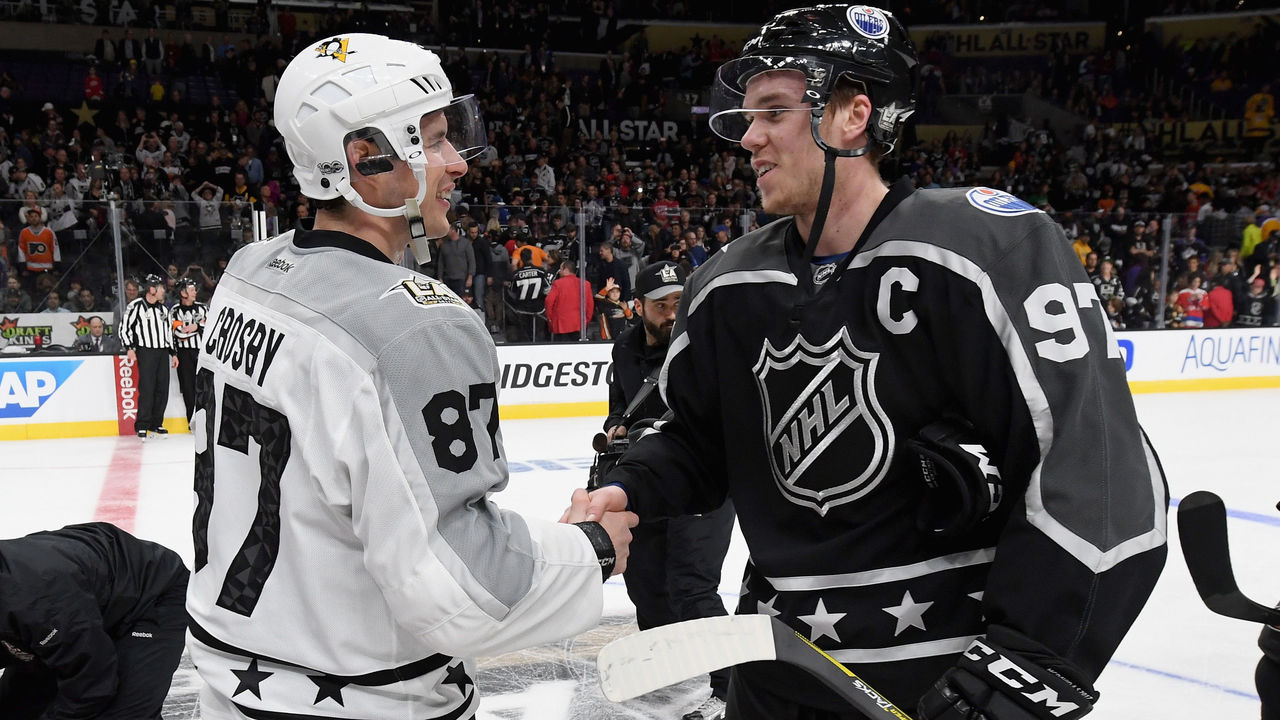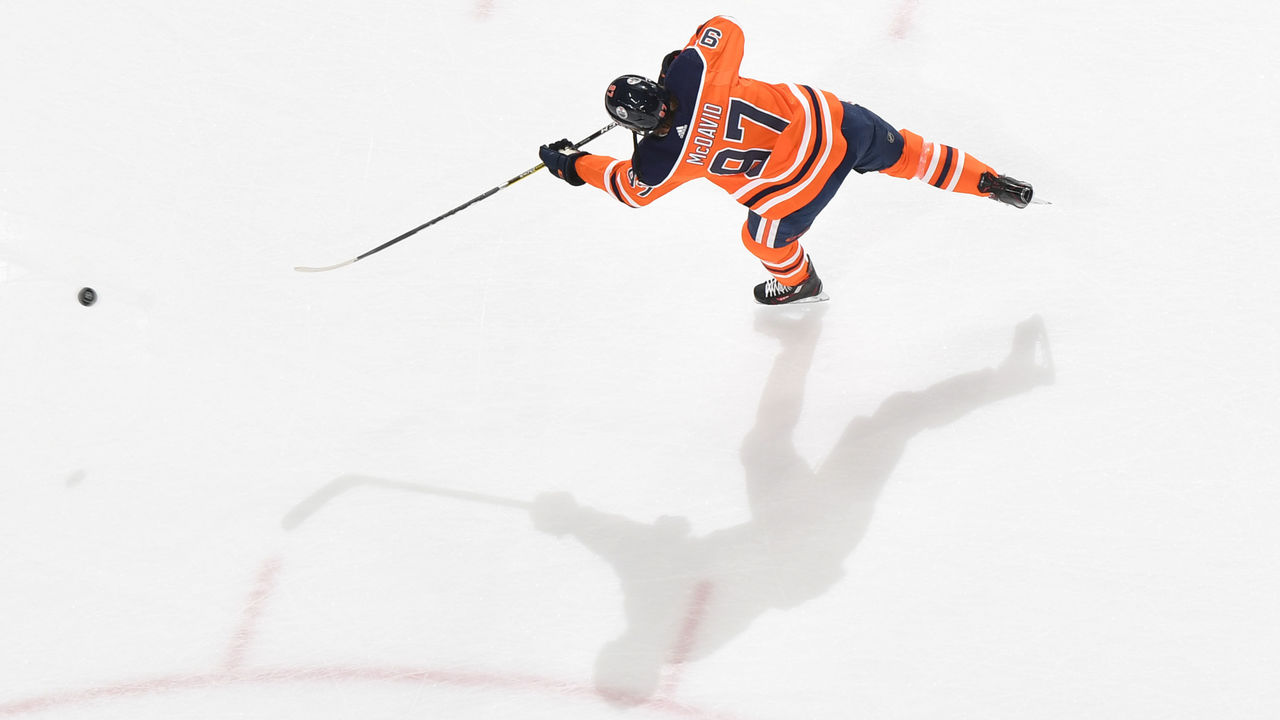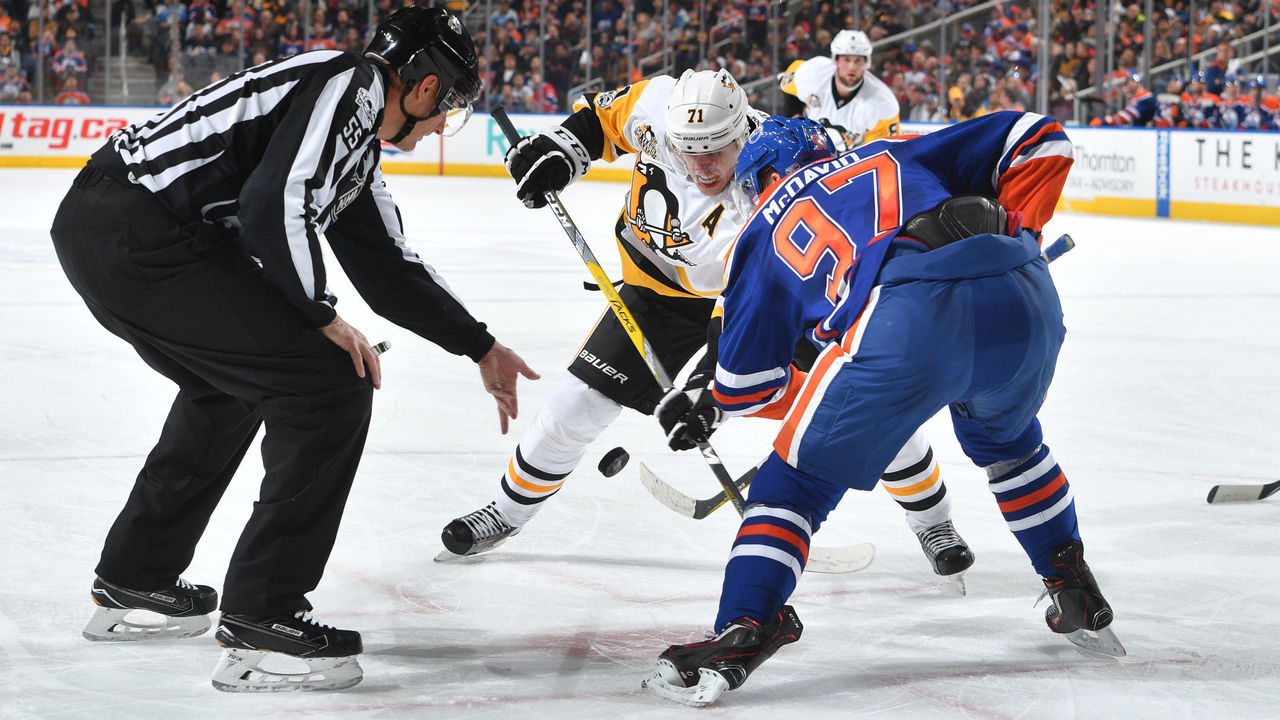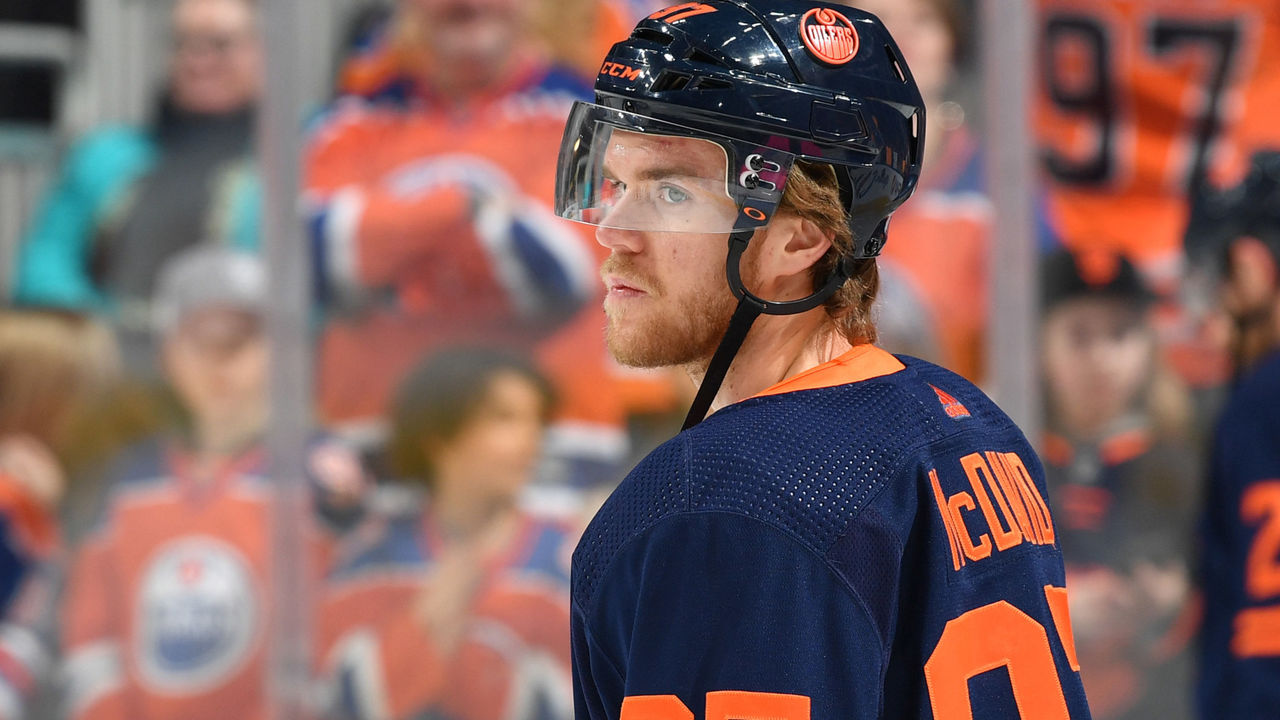Monthly Archives: January 2021
Devils sign Sami Vatanen to 1-year deal after trading him last season
The New Jersey Devils signed defenseman Sami Vatanen to a one-year deal worth $2 million, the team announced Thursday.
Vatanen was a member of the Devils for the past three years before he was dealt to the Carolina Hurricanes at the trade deadline last season.
More to come.
Copyright © 2021 Score Media Ventures Inc. All rights reserved. Certain content reproduced under license.
Bruins name Patrice Bergeron captain
The Boston Bruins named forward Patrice Bergeron the team's 20th captain in franchise history on Thursday.
The legacy continues.#NHLBruins pic.twitter.com/t76NqIcoQd
— Boston Bruins (@NHLBruins) January 7, 2021
Zdeno Chara, who recently departed in free agency, had been the team's captain since 2006. The towering defenseman helped lead the Bruins to a Stanley Cup victory in 2011 and had been a staple of the club for the last 14 years.
David Krejci and Brad Marchand will serve as alternates.
The Letters.#NHLBruins pic.twitter.com/3SZyIVAm5i
— Boston Bruins (@NHLBruins) January 7, 2021
Bergeron, 35, has spent his entire NHL career in Boston since being selected by the team in the second round of the 2003 draft. Entering his 17th season, he's appeared in 1,089 career games while totaling 352 goals and 517 assists.
"Patrice Bergeron exudes leadership, character, talent, will, and empathy. We all know Bergy embraces the legacy of the Boston Bruins, as he will with the captaincy," general manager Don Sweeney said. "Bergy has earned the respect of all of his teammates, coaches, and everyone in the Bruins organization."
Throughout his career, Bergeron has been among the league's premier two-way forwards. He's been nominated for the Selke Trophy for the last nine consecutive seasons and won it in 2012, 2014, 2015, and 2017.
He's also been recognized for his contributions away from the rink. He won the King Clancy Trophy in 2013, which is awarded annually to an NHL player who best exemplifies leadership qualities both on and off the ice, and he took home the NHL Foundation Player Award in 2014.
"For 16 seasons we have all watched Patrice grow not only into an elite player but also a tremendous leader," Bruins president Cam Neely said. "Patrice represents the Bruins organization and our fans with integrity, determination, and class."
Copyright © 2021 Score Media Ventures Inc. All rights reserved. Certain content reproduced under license.
Keefe believes Thornton can keep up with Marner, Matthews
Some people were surprised to see Joe Thornton on a line with Auston Matthews and Mitch Marner when the Toronto Maple Leafs opened training camp, but head coach Sheldon Keefe has faith that the trio will work.
"One of the things that has really surprised me in this camp is watching Joe. We've done a ton of skating the first few days ... and Joe is in the middle of the pack. He's not at the bottom," Keefe told the Toronto Sun's Steve Simmons. "He's beating guys he’s 20 years older than. People that don't watch him that much know that he plays a slow game.
"He's not as slow (as) you'd think."
The 41-year-old has played center for practically his entire 22-year NHL career, but he appears set to feature on the left wing of a line with Matthews and Marner to kick off the season.
Thornton noted that he played left wing during his recent stint with HC Davos in Switzerland and recently said that being on a line with the dynamic forwards makes him "feel young again."
Keefe isn't expecting the veteran to keep up with Matthews and Marner for an entire game or the whole season, but he plans to ensure the line stays fresh and Thornton doesn't burn out.
"He's going to do his thing below the hash marks, and I've been up-front with him. We're going to give him a chance to see if this can work, acknowledging the fact those guys will play significant minutes and he won't be able to play that many," Keefe said. "We're going to manage his offensive and defensive starts. You're still going to see Zach (Hyman) on that line. We're not just throwing Joe out there figuring he'll play 20-22 minutes. … This is what we want to give him a chance to do early on."
One of the game's all-time greatest playmakers, Thornton registered seven goals and 24 assists in 70 games with the San Jose Sharks last season.
Copyright © 2021 Score Media Ventures Inc. All rights reserved. Certain content reproduced under license.
NHL Rumor Mill – January 7, 2021
NHL Morning Coffee Headlines – January 7, 2021
Barrie hopes to get back to Colorado-form with Oilers
Tyson Barrie hopes a fresh start with the Edmonton Oilers this season gets him back on track.
The veteran blue-liner inked a one-year, $3.75 million contract with Edmonton over the fall and wants to put a turbulent one-year stint with the Toronto Maple Leafs behind him.
"The year in Toronto may have changed things a bit, and then you throw a pandemic into the mix," Barrie told Sportsnet's Mark Spector. "It was just kind of a bizarre circumstance. I'd like to get back to the player I was when I left Colorado. It's tougher than you think, moving teams, having a new coach, and all that.
"I think I have the hang of it now. I've wrapped my head around it. It's not like I'm looking to prove people wrong, but just kind of re-establish myself."
Barrie posted three 50-plus point seasons in eight years with the Colorado Avalanche and then was traded to Toronto last July in a blockbuster deal that included forward Nazem Kadri going to Denver.
The Leafs and Barrie both limped out of the gates under head coach Mike Babcock, which affected the defenseman's mindset.
"I'd never been off to a start like that: no goals, seven assists in 25 games. Our team was floating around .500, and it just felt like a lot of pressure. You know, more pressure than I'd dealt with in Colorado," Barrie said.
The 29-year-old's numbers improved when Toronto replaced Babcock with Sheldon Keefe. Barrie finished the year with 39 points in 70 games while averaging nearly 22 minutes per night.
Barrie is expected to play a prominent role with the Oilers this season at five-on-five and on the power play before becoming an unrestricted free agent again.
Copyright © 2021 Score Media Ventures Inc. All rights reserved. Certain content reproduced under license.
Best bets to make/miss the playoffs: Regression looms for Canucks, Caps
Find line reports, best bets, and subscribe to push notifications in the Betting News section.
A condensed regular-season schedule that will see teams play 56 games in under four months promises to make this year's playoff sprint as intense as ever.
Each game's magnitude is amplified as clubs are slated to only play within their divisions, and the new format couldn't be simpler, with four teams from each group making the postseason.
Here are every team's odds of making the playoffs, followed by our favorite value bets.
| TEAM | MAKE | MISS |
|---|---|---|
| Tampa Bay Lightning | -850 | +550 |
| Colorado Avalanche | -800 | +500 |
| Toronto Maple Leafs | -750 | +475 |
| Vegas Golden Knights | -750 | +450 |
| Carolina Hurricanes | -450 | +325 |
| Boston Bruins | -400 | +300 |
| St. Louis Blues | -320 | +250 |
| Philadelphia Flyers | -260 | +210 |
| Dallas Stars | -225 | +180 |
| Edmonton Oilers | -200 | +165 |
| Montreal Canadiens | -200 | +165 |
| Washington Capitals | -190 | +160 |
| Calgary Flames | -185 | +155 |
| Pittsburgh Penguins | -180 | +150 |
| Nashville Predators | -115 | -115 |
| Vancouver Canucks | -115 | -115 |
| Minnesota Wild | +100 | -120 |
| Columbus Blue Jackets | +105 | -135 |
| Winnipeg Jets | +110 | -140 |
| Florida Panthers | +115 | -135 |
| New York Islanders | +120 | -150 |
| New York Rangers | +130 | -150 |
| San Jose Sharks | +230 | -280 |
| Anaheim Ducks | +270 | -340 |
| Arizona Coyotes | +270 | -340 |
| Buffalo Sabres | +300 | -400 |
| Los Angeles Kings | +375 | -550 |
| New Jersey Devils | +400 | -575 |
| Chicago Blackhawks | +525 | -850 |
| Ottawa Senators | +800 | -2000 |
| Detroit Red Wings | +1200 | -4000 |
(Odds source: theScore Bet)
Minnesota Wild: Yes (+100)
There might not be a preseason bet I like more than the Wild making the playoffs at even money. This is a solid hockey team facing minimal competition for fourth place in the West Division.
Minnesota is loaded on the back end with one of the strongest top-six units in the league, playing in front of an underrated goaltending tandem with Alex Stalock and newly acquired Cam Talbot. The Wild aren't simply going to outscore teams, but they'll generate a lot more offense than in recent years. This young forward group is primed to take a step forward, led by budding superstar Kevin Fiala and exciting rookie Kirill Kaprizov.
In a top-heavy West Division, the Wild shouldn't have much issue rounding out the playoff field behind the Avalanche, Golden Knights, and Blues. The Coyotes severely lack firepower. San Jose is spiraling toward a rebuild with a depleted bottom-six and miserable goaltending situation. The Ducks and Kings will safely assume the role of bottom-feeders. The path is clear as day for the Wild to return to the postseason in 2021.
Washington Capitals: No (+160)
The Capitals, who last missed the playoffs in the 2013-14 season and won the Cup in 2018, are still being viewed by the masses as this perennial championship contender. But cracks are forming under the surface, and the bottom will fall out on this team sooner than we may realize.
Washington is one of the NHL's oldest teams, and that's not a recipe for success with rest days in short supply this year. Also, regression looms for a club whose underlying numbers weren't nearly as impressive as its record suggested last season. Depth isn't the Capitals' issue, but the declining production of their top stars upfront is a problem, creating warranted skepticism as to whether they can still perform at the elite level needed to succeed. Defensively, they are average at best, while 23-year-old Ilya Samsonov is no sure thing in goal.
Washington has been placed in the ultra-competitive East Division under this new format. The Bruins, Penguins, and Flyers will claim three divisional playoff spots, leaving the Capitals to fight for the final slot. The Rangers, Devils, and Sabres are all young, hungry, and vastly improved, while the Islanders still aren't getting the respect they deserve. This line offers great value.
Vancouver Canucks: No (-115)
Coming off an exemplary playoff run with their young core, it's assumed the Canucks will continue their ascent in 2021. That's hardly a safe assumption. Vancouver's postseason success came on the back of good fortune more than anything, managing just a 40.8% expected-goals rate (xGF%). It was a common theme all season for the Canucks, who ended the regular season bottom 10 in Corsi percentage and bottom five in xGF%, allowing the third-most expected goals per 60 minutes.
The team was bailed out consistently by the heroics of the now-departed Jacob Markstrom and still barely reached the postseason. It leaves a massive void in Vancouver's net that isn't going to be filled by Thatcher Demko and Braden Holtby. Demko turned heads in the playoffs, but his abbreviated run was a flash in the pan. He posted a pedestrian .905 save percentage in the regular season, and the Canucks played .500 hockey with him between the pipes. Holtby, meanwhile, was legitimately bad last season and his best days are clearly behind him.
In addition to the downgrade in net and looming regression, the Canucks possess a very weak supporting cast for their elite young core. Vancouver's bottom-six is among the league's worst, and its third pairing is barely replacement level following a disappointing offseason. In a year where depth will prove vital, the Canucks' lack thereof will see them take a step back in a very competitive North Division.
Alex Moretto is theScore's supervising editor of sports betting. A journalism graduate from Guelph-Humber University, he has worked in sports media for over a decade. He will bet on anything from the Super Bowl to amateur soccer, is too impatient for futures, and will never trust a kicker. Find him on Twitter @alexjmoretto.
Copyright © 2021 Score Media Ventures Inc. All rights reserved. Certain content reproduced under license.
Jackets Re-Sign Bjorkstrand, Predators Sign Kunin In Latest NHL Moves
After 5 years, how does McDavid stack up against the NHL’s greats?
As sports fans, we obsess over the numbers five and 10, and their multiples: five-year dynasty, 10-year anniversary, 25-year era, 50-year title drought.
A notable recent anniversary came and went quietly: Oct. 8 marked five years since Connor McDavid played his first NHL game. The occasion got lost in the shuffle during the busiest week of a weird offseason.
McDavid has either met or exceeded expectations - depending on who you ask - as he approaches his sixth NHL season, which begins on his 24th birthday next Wednesday. And while the Edmonton Oilers have competed in just 17 playoff contests over McDavid's tenure, that's a reflection of the organization's overall performance, not the play of its high-flying superstar.

On a purely individual level, how does McDavid stack up against some of the NHL's all-time greats? Is he on a Sidney Crosby-esque trajectory following five seasons? How far off is he from benchmarks set by Wayne Gretzky?
Using the Hockey Reference database and borrowing ESPN football writer Bill Barnwell's "blind items" format, we're going to break it all down by comparing McDavid's statistical profile with those of Crosby, Gretzky, and other luminaries over the first five seasons of their NHL careers.
Feel free to play along by guessing which stat line represents McDavid in the four groupings below.
Blind item No. 1
Player A: 371 games played, 506 points, 1.36 points per game
Player B: 396 games played, 529 points, 1.34 points per game
Player C: 351 games played, 469 points, 1.34 points per game
It's only natural to start with McDavid, Crosby, and Alex Ovechkin. These transcendent forwards have run roughshod over the competition in the salary-cap era while being marketed as faces of the sport.
Player A is Crosby, McDavid's childhood idol. He went tit for tat with Ovechkin when the international rivals burst onto the scene together in 2005-06. Crosby posted 100 or more points in four of his first five seasons, including a career-high 120 points in his sophomore campaign to earn his first haul of hardware, namely the Hart Trophy. He was unstoppable.
Player B is Ovechkin, the self-proclaimed Russian machine that never breaks. Impressively, Ovechkin missed only 13 regular-season games during his first half-decade in North America. Over that stretch, he averaged an incredible 54 goals a year, including a loony 65-goal barrage in 2007-08. Ovechkin also established the Ovi Spot inside the left circle, which he utilizes to this day.

Player C is, obviously, McDavid. The heir to Crosby's throne as the so-called Next One has, astonishingly, kept pace with the younger versions of Crosby and Ovechkin. McDavid battled through multiple major injuries but his points-per-game rate reflects Ovechkin's and is a sliver behind Crosby's. Each player deploys a different style: McDavid's bread and butter is his next-level skating, Crosby is the perfect blend of power and grace, and Ovechkin is a sharpshooting wrecking ball. But from a production standpoint, all three arrived at essentially the same destination five years into their careers.
When adjusted for era, the rates and rankings change. McDavid becomes the most productive at 1.43 points per game, Crosby slides to second at 1.41, and Ovechkin sits third at 1.39. All three have technically played in the same era, but the NHL's post-lockout jolt of offense in the mid-2000s docks Crosby and Ovechkin within Hockey Reference's adjustment formulas.
No matter the order, the main takeaway is the same: Little separates these three stars, which is high praise for McDavid.
Blind item No. 2
Player A: 351 games played, 161 goals, 0.46 goals per game
Player B: 352 games played, 158 goals, 0.45 goals per game
The mystery player is an active NHLer which means, despite a 10-and-a-half-year age gap, he's a McDavid contemporary of sorts.
Player A is McDavid. Player B is Evgeni Malkin. McDavid edges out early-career Malkin ever so slightly in both total goals scored and goals per game. Injuries also hampered Malkin early in his career, notably a knee injury that cost him half of the 2010-11 season, so they played a similar number of games in their first five years. (As for total ice time, however, McDavid skated for an extra 192 minutes.)

This side-by-side comparison also underlines McDavid's underrated goal-scoring ability. We don't typically think of the Oilers captain as an elite finisher since his crafty playmaking is unparalleled and he doesn't have a 50-goal season to his name. But he does have two 40-goal seasons, and he's one of only eight players in the salary-cap era to put up multiple 40-goal seasons within his first five years in the league.
Malkin, for what it's worth, ranks fourth in goals since entering the league in 2006-07, with 416 in 907 games. And McDavid has kept pace with him through their first five seasons. Malkin was also a year-and-a-half older at his NHL debut than McDavid, who played his first game about three months short of his 19th birthday.
Blind item No. 3
Player A: 324 even-strength points, accounting for 69.1% of all points
Player B: 290 even-strength points, accounting for 74.6% of all points
As lethal as McDavid is on the man advantage, the majority of his production in the NHL has come during even-strength action. To be precise, 69.1% of his total points have been recorded at evens, which includes five-on-five, four-on-four, and three-on-three.
Player B is Jaromir Jagr, arguably the most overqualified sidekick in history. Like McDavid, Jagr - who, at the age of 48, is still playing pro hockey in the Czech Republic - also relied heavily on even-strength ice time to generate offense early in his NHL career. That eye-popping number (74.6% of Jagr's points coming at evens) paces all eight comparison players mentioned in this piece.
Here's a full rundown:
| PLAYER | ES POINTS | TOTAL PTS | % ES |
|---|---|---|---|
| Jaromir Jagr | 290 | 389 | 74.6 |
| Connor McDavid | 324 | 469 | 69.1 |
| Eric Lindros | 300 | 436 | 68.8 |
| Wayne Gretzky | 618 | 914 | 67.6 |
| Alex Ovechkin | 317 | 529 | 59.9 |
| Evgeni Malkin | 250 | 418 | 59.8 |
| Sidney Crosby | 290 | 506 | 57.3 |
| Mario Lemieux | 387 | 715 | 54.1 |
No player falls below 54%, which suggests the greatest offensive players in the world are great in part because they outduel the competition night after night. Special-teams production is certainly important - a point is a point - but it clearly isn't the entree, especially in the extreme cases of McDavid, Jagr, Lindros, and Gretzky.
Blind item No. 4
Player A: 469 points, 1.34 points per game, 503 era-adjusted points, 1.43 era-adjusted points per game
Player B: 436 points, 1.47 points per game, 461 era-adjusted points, 1.55 era-adjusted points per game
Player C: 715 points, 1.94 points per game, 586 era-adjusted points, 1.59 era-adjusted points per game
Player D: 914 points, 2.33 points per game, 722 era-adjusted points, 1.84 era-adjusted points per game
This exercise wouldn't be complete without placing McDavid's era-adjusted point total and per-game rate beside those of Gretzky, Lemieux, and Lindros. The Great One, Super Mario, and Big E were all unique talents - unicorns, even - in the period of hockey history preceding McDavid's career.
The easiest player to identify is Gretzky (Player D). The start of Gretzky's career coincided with an offensive boom across the NHL. Yet those 722 era-adjusted points jump off the page just as much as the unadjusted 914. Gretzky is the high-water mark in any discussion about one skater's impact on the game, regardless of era. The NHL could wipe every goal from Gretzky's resume and he would still hold the record for most career points.
Lindros and Lemieux are Player B and Player C, respectively. Both were 6-foot-4, played center, and shot right. Both also possessed a force-of-nature aura that's lacking from McDavid, Gretzky, and virtually every other great. Unfortunately, Lindros and Lemieux ran into serious injuries in their 30s. Looking back, Lindros' first five seasons stand as his best run, while Lemieux, who rattled off five straight campaigns with 100 or more points to begin his incredible career, boasts an even better era-adjusted point total and per-game average.

All of this is to say McDavid (Player A) has thus far produced offense at a level close to early-career Lindros, at least based on Hockey Reference's calculations. McDavid hasn't been quite as dominant - he's 0.12 era-adjusted points per game behind Lindros - but the statistical comparison is fair. That's a giant compliment, especially since McDavid's situation has been less than ideal in terms of getting support from teammates not named Leon Draisaitl.
To recap: McDavid's first five years in the NHL line up almost seamlessly with the first half-decade of Crosby and Ovechkin's careers in point gathering, his goal-scoring is on par with Malkin's early work, he's dined out in Jagr-like fashion during even-strength action, and Lindros offers a decent cross-generation comparable in era-adjusted points.
Let's not forget McDavid has picked up plenty of hardware through his first five seasons: one Hart Trophy, two Art Ross Trophies, two Ted Lindsay Awards, and three first-team All-Star nods. Plus, he's produced countless highlight-reel plays. He's well on his way to the Hockey Hall of Fame and still in his prime.
Where does McDavid rank on the all-time list of NHL players? Top 50? Top 25? Top 10?! Just kidding. Relax. We'll save that discussion for 2035.
John Matisz is theScore's national hockey writer. Contact him via email (john.matisz@thescore.com) or through Twitter (@MatiszJohn).
Copyright © 2021 Score Media Ventures Inc. All rights reserved. Certain content reproduced under license.